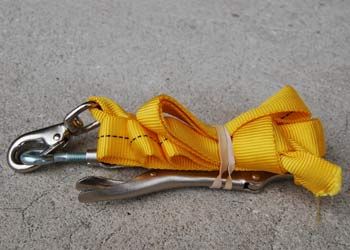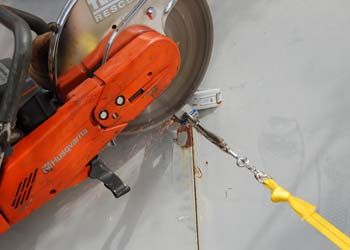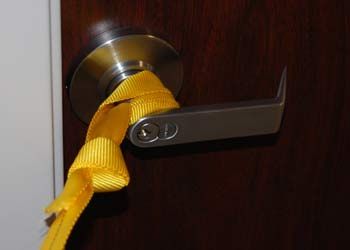Locking pliers — more commonly known by firefighters as the brand name “Vise-Grips” — are an extremely handy tool to have readily available. They can be used for a number of different tasks on the fireground and on other emergency calls.
These tools can be easily modified to increase their effectiveness. Simply swapping out the traditional set bolt with an eye bolt adds a tremendous amount of versatility to the tool.
This simple modification adds the ability to quickly attach a lanyard to the tool. The tool and lanyard combination can be used in a number of different forcible entry situations.
 |
The two main sizes of locking pliers that should be considered for fireground usage are the 7-inch and 10-inch versions. The 7-inch version works well if the locking pliers will be carried as a personal tool.
The 10-inch (or larger) may offer more versatility, but tend to be a bit bulky to carry in your pocket. The 7-inch version typically requires a 5/16-inch x 18-inch thread bolt, and the 10-inch version typically requires a 7/16-inch x 14-inch thread bolt.
The average home improvement store may not have either size eye bolt in stock, but here is the secret: they more than likely have a turnbuckle with the proper size eye bolt. Just keep in mind that one of the eye bolts on the turnbuckle will have a reverse thread.
The lanyard is made from a 6-foot piece of 1-inch webbing and a snap hook. Once the knots are tied in the webbing, it makes an approximately 4-foot long lanyard with handle.
The style of snap hook shown is the preferred style because it can easily be clipped with a gloved hand. Unclipping with a gloved hand will be difficult, regardless of the style of hook used.
Snap hooks with a thumb latch are not able to be clipped while wearing gloves and typically have a smaller opening, making it difficult to work with this size webbing.
Thinner webbing (or rope) with smaller hooks could certainly be used, but they end up being more difficult to “feel” and manipulate while wearing gloves.
The lanyard can be secured to the locking pliers with a rubber band or section of tape for storage. Either one will keep the lanyard neatly stored and can easily be removed when the tool is placed in service.
One of the most popular tasks for the locking pliers lanyard combination is to hold a padlock while cutting with a rotary saw.
 |
Simply clamping the locking pliers onto the body of the lock allows a firefighter to hold tension on the lock to prevent it from bouncing around while cutting. Keep in mind that when faced with a padlock and chain combination, it may be quicker to cut the chain verses cutting the lock itself.
Even when separated from the locking pliers, this lanyard is extremely useful. The most popular use is to control the door during forcible entry operations.
 |
The lanyard can quickly be girth hitched around the knob of an inward facing door. This allows the forcible entry team to control the door during the force, and provides a means to pull the door closed from a safe area if conditions require.









